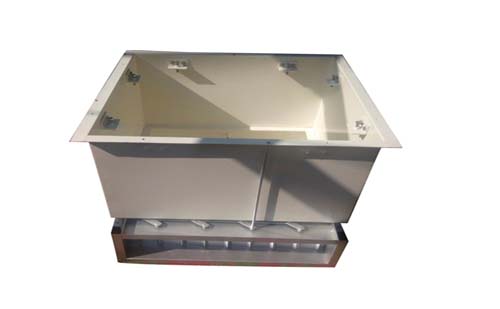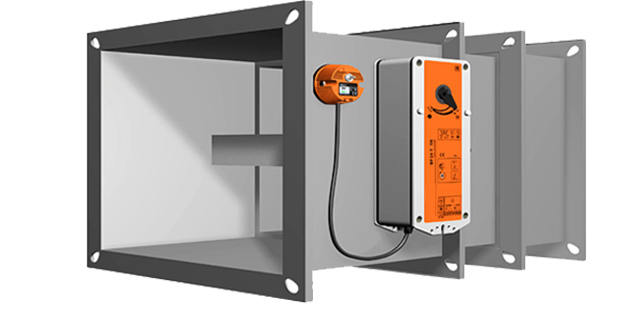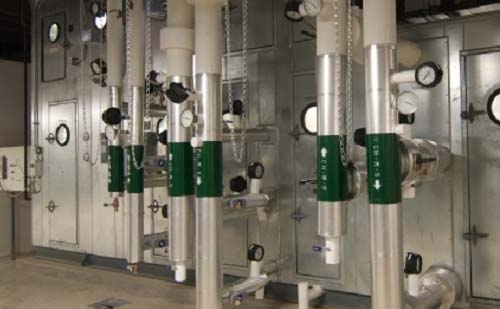
TEARMINAL HOUSING
Terminal Housing Pharma is a specialized facility that serves as a central hub for pharmaceutical operations and logistics. It is designed to accommodate the storage, distribution, and processing of pharmaceutical products, ensuring their safety, integrity, and efficient management.
- Terminal Housing Pharma provides a secure housing facility for pharmaceutical products, ensuring the integrity and safety of the stored items.
- he terminal housing is equipped with temperature-controlled environments to maintain the required temperature range for pharmaceutical products, preventing degradation or spoilage.
- Terminal Housing Pharma adheres to strict regulatory standards, such as Good Distribution Practices (GDP) and Good Manufacturing Practices (GMP)
- The facility offers robust inventory management systems to accurately track and manage pharmaceutical stock, reducing the risk of stockouts or overstocking.
The terminal housing is a secure and controlled environment that adheres to strict regulatory standards and quality guidelines set forth by pharmaceutical authorities. It consists of various sections and amenities tailored to meet the specific needs of the pharmaceutical industry.

GRILLS AND DIFFUSERS
A grille is a perforated metal cover that allows air to flow through while concealing the ductwork or other equipment behind it. Grilles are often used in HVAC systems to distribute conditioned air throughout a building. They can also be used in other applications, such as to provide ventilation for appliances or to protect electrical outlets.
- Grilles are primarily used to conceal ductwork or other equipment, while diffusers are used to direct the flow of air
- The size and shape of the opening where the grille or diffuser will be mounted.
- The desired airflow pattern.
- The aesthetic requirements of the space.
- Grilles are typically less expensive than diffusers.
A diffuser is a device that directs the flow of air from an HVAC system. Diffusers can be used to distribute air evenly throughout a room or to create a specific airflow pattern. They are typically made of metal or plastic and can be mounted in the ceiling, wall, or floor.

FIRE DAMPERS
Fire dampers begin operation when room temperatures rise to around 165 degrees Fahrenheit, at which point the damper’s fusible link will melt, causing its door to close. What that does is prevent the spread of fire, helping to keep damage to a minimum. It’s important for property owners to note rooms that are habitually heated to 165 degrees or hotter will require fire dampers featuring fusible links that have higher melting points.
- Fire dampers are designed to resist the passage of fire for a specified period of time, typically 20, 30, or 60 minutes. This helps to prevent the spread of fire from one area of a building to another.
- Fire dampers can also be used to control the spread of smoke. This is important because smoke can be just as dangerous as fire, and it can make it difficult for people to escape from a burning building.
- Fire dampers are typically operated automatically by a fusible link or heat sensor. This means that they will close automatically in the event of a fire, without any human intervention
- Fire dampers can also be operated manually. This may be necessary in the event of a power outage or other emergency
- Fire dampers must be durable enough to withstand the harsh conditions found in HVAC systems. They must also be able to operate repeatedly without failure.
The dampers prevent the spread of fire through heating, ventilation, and AC ducts, which helps to stop a fire from spreading throughout the rest of the home. They also help to prevent smoke from traveling through the building’s ductwork in the event of a fire.

ALL TYPES OF FILTERS
Room panel filters are a type of air filter that is used in HVAC systems to remove dust, pollen, and other pollutants from the air. They are typically made of a pleated paper or fabric material that is impregnated with a filter media, such as activated carbon or fiberglass. Room panel filters are available in a variety of sizes and ratings, and can be installed in both residential and commercial HVAC systems.
- Room panel filters can help to remove pollutants from the air, such as dust, pollen, pet dander, mold spores, and bacteria. This can improve your indoor air quality and reduce your risk of allergies, asthma, and other respiratory problems.
- Room panel filters can help to improve the energy efficiency of your HVAC system by trapping pollutants that would otherwise reduce the efficiency of the system.
- Room panel filters can help to extend the life of your HVAC system by protecting it from the damaging effects of pollutants.
Room panel filters work by trapping particles as the air passes through them. The smaller the particles, the more effective the filter will be at removing them. Panel filters are typically rated according to their efficiency at removing particles of a certain size. The most common rating system is the MERV (minimum efficiency reporting value) scale. MERV ratings range from 1 to 16, with higher ratings indicating a higher level of filtration efficiency.

PIPING OF AHU
The piping of an Air Handling Unit (AHU) refers to the network of pipes and fittings that are used to transport fluids, such as air, water, or refrigerant, to and from the AHU. AHUs are commonly used in heating, ventilation, and air conditioning (HVAC) systems to condition and distribute air within a building.
- The AHU receives conditioned air from the supply duct, which is connected to the main HVAC system. This duct carries the treated air to the AHU for further distribution.
- After the conditioned air is circulated within the building, it is drawn back to the AHU through the return duct. This duct collects the air and directs it back to the AHU for reconditioning.
- The AHU may have heating coils and cooling coils that are connected to the building's heating and cooling systems, respectively. These coils transfer thermal energy to or from the air to achieve the desired temperature.
It's important to note that the specific design and configuration of AHU piping may vary depending on the HVAC system requirements, building layout, and project specifications. Professional HVAC engineers and technicians are typically responsible for designing and installing the piping system to ensure optimal performance and efficiency.
